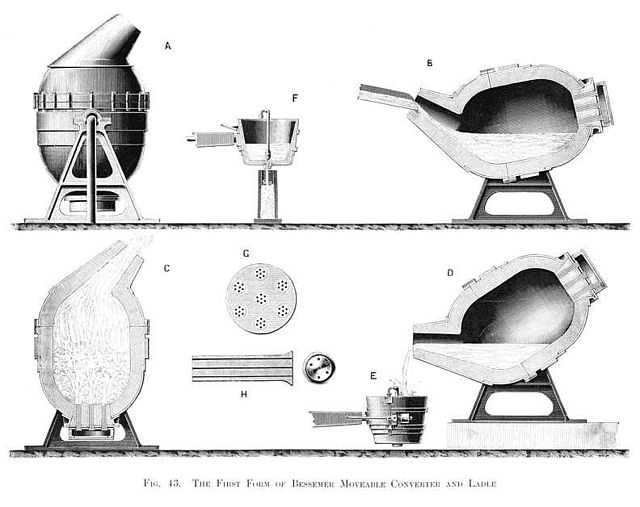Second Industrial Revolution
The Second Industrial Revolution, also known as the Technological Revolution, was a phase of rapid scientific discovery, standardisation, mass production and industrialisation from the late 19th century into the early 20th century. The First Industrial Revolution, which ended in the middle of the 19th century, was punctuated by a slowdown in important inventions before the Second Industrial Revolution in 1870. Though a number of its events can be traced to earlier innovations in manufacturing, such as the establishment of a machine tool industry, the development of methods for manufacturing interchangeable parts, as well as the invention of the Bessemer process and open hearth furnace to produce steel, the Second Industrial Revolution is generally dated between 1870 and 1914.
An Austrian railway in 1895
A telegraph key used to transmit text messages in Morse code
The ocean liner SS Kaiser Wilhelm der Grosse, a steamboat. As the main means of trans-oceanic travel for more than a century, ocean liners were essential to the transport needs of national governments, commercial enterprises and the general public.
A diagram of the Bessemer converter. Air blown through holes in the converter bottom creates a violent reaction in the molten pig iron that oxidizes the excess carbon, converting the pig iron to pure iron or steel, depending on the residual carbon.
Industrialisation (UK) or industrialization (US) is the period of social and economic change that transforms a human group from an agrarian society into an industrial society. This involves an extensive reorganisation of an economy for the purpose of manufacturing. Industrialisation is associated with increase of polluting industries heavily dependent on fossil fuels. With the increasing focus on sustainable development and green industrial policy practices, industrialisation increasingly includes technological leapfrogging, with direct investment in more advanced, cleaner technologies.
Industrialisation also means the mechanisation of traditionally manual economic sectors such as agriculture.
Factories, refineries, mines, and agribusiness are all elements of industrialisation.
An 1886 portrait by Robert Koehler depicting agitated workers facing a factory owner in a strike
A panorama of Guangzhou at dusk








